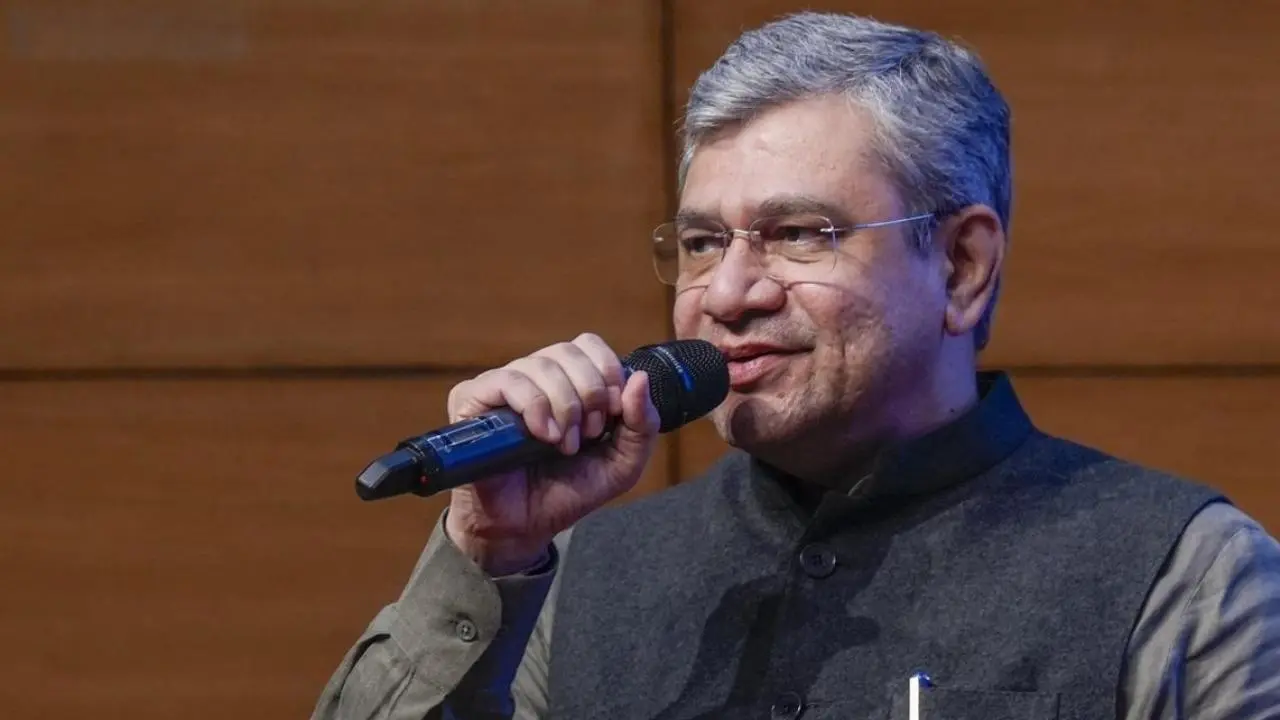BRAINERD, Minn. – The Minnesota Department of Natural Resources is moving ahead with a proposal to decrease the statewide walleye limit from six fish to four and is supporting bills in the Legislature to provide a year-round season for largemouth and smallmouth bass. Brad Parsons, DNR fisheries chief, discussed the pending changes Saturday, March 29, during the DNR’s second annual Fisheries Summit.
Held at Central Lakes College in Brainerd, the event was attended by 106 people, along with another 10 who watched the afternoon portion of the summit virtually. The summit kicked off with a morning session in which members of the DNR’s Bass, Esocid (muskie and pike), Walleye, Panfish, Bait, Esocid/Technology and Catfish workgroups met individually to discuss their respective species. The citizen-focused groups meet several times a year to discuss research, population, harvest trends and fisheries management with DNR fisheries staff.

Karry Kyllo of East Grand Forks is a member of the Walleye Workgroup, and Red River catfish guide Brad Durick is a member of the Catfish Workgroup. According to Parsons, the DNR’s Fisheries Section developed the Fisheries Summit as an alternative to the DNR Roundtable, an annual event that covers a variety of agency-related topics and not just fishing issues. “The Roundtable used to be all about fish,” Parsons said.
“The Roundtable is still an excellent event, but it’s not all about fishing anymore and that’s OK. “So, that’s why we came up with this meeting.” Bills in the Minnesota House and Senate – HF 2824 and SF 3031 – to establish a year-round bass season are working their way through the Legislature.
The year-round bass season proposal, which is billed as a collaborative effort between the DNR and the MN-FISH Coalition, wouldn’t allow bass tournaments before the May walleye opener. And since largemouths and smallmouths don’t spawn until late May or early June, early season catch-and-release fishing wouldn’t affect bass spawning, supporters say. Currently, bass season opens on the general fishing opener, which this year is May 10, and will close Feb.
22, 2026. Bass fishing is catch-and-release only the first two weeks of season, except for portions of far northeast Minnesota, where a six-fish limit is in effect throughout the season. “I’ll say it – I was not in favor of this (proposal) when it first came out,” Parsons said.
“I am capable, believe it or not, of changing my mind. I originally thought, ‘Well, it’s a handful of people with big boats who don’t want to drive to Wisconsin to fish bass.’ “I heard from enough other people – kayak anglers, shore anglers, student anglers – who said, ‘No, I would really like to do this, and it would really enhance my spring.
’ ” Bass populations in Minnesota aren’t a concern, Parsons added. “The big picture in Minnesota right now is we do not have a recruitment problem for bass,” Parsons said, referring to young fish being recruited to the population each year. “If we did (have a recruitment problem), an early season would be a really, really bad idea.
” As for scheduling bass tournaments, “that should probably be an individual lake discussion, but we’re going to need some consistency around the state in how we do that,” Parsons said. Despite DNR support, establishing a year-round bass season requires a change in statute, unlike the DNR’s plan to reduce the statewide walleye limit to four, which the DNR can do through its rulemaking process, Parsons said. That’s because the year-round bass season would be a less restrictive regulation, he said, as opposed to reducing the walleye limit from six to four, a proposal that would be more restrictive.
If the bass bill passes, it still would have to go through the DNR’s rulemaking process. That led to confusion among people who attended a MN-FISH Coalition summit Thursday, March 27, in Grand Rapids, Parsons said in Brainerd. “A four-walleye limit, we can do all that in rule – that’s not a problem,” he said.
“And we can change the bass season in rule, but we can only change the bass season in rule after we change the statute that says, ‘This is the bass season that’s actually in statute, along with walleye, northern pike and muskie.’ “We have to change (the statute) in order to be able to allow more than what is out there, in terms of the season.” As proposed in the legislation, bass would join sunfish, crappies, yellow perch, channel catfish, rock bass, white bass, yellow bass, burbot, tullibees, lake whitefish, common carp and native rough fish as species with a continuous open season in Minnesota.
After several years of discussion, the DNR is moving ahead with a proposal to reduce the statewide walleye limit from six fish to four, Parsons said. “That doesn’t mean it’s a done deal,” he said. “There is a legal process we go through.
...
There will be an official comment period, and we’ve heard from lots of people. We expect to hear from lots more people.” The four-walleye limit wouldn’t go into effect before 2026.
Minnesota has had a six-fish walleye limit since 1956, although most of the state’s premier walleye lakes, with the exception of Cass and Winnibigoshish, already have lower walleye limits. Lake of the Woods, for example, has an aggregate walleye-sauger limit of six, of which no more than four can be walleyes; all walleyes from 191⁄2 to 28 inches must be released, and only one walleye over 28 inches is allowed. Parsons said he has met with the Community of Minnesota Resorts organization about the proposed statewide walleye limit change.
One concern, he said, is that anglers from out of state will bypass Minnesota for states such as North Dakota, which has a daily limit of five walleyes and a possession limit of 10. “My argument, frankly, for many years is places that we have (a four-walleye limit), the resort community has not collapsed,” Parsons said. “Most of our large lakes, with the exception of Winnie and Cass, already have four (walleyes) or less, and they also have additional size restrictions.
” Limits aren’t necessarily the reason people go to a resort or a lake to fish, he said. Joe Henry, executive director of the Lake of the Woods Tourism Bureau, said he doesn’t “necessarily agree” with that assessment. In addition to his position with Lake of the Woods Tourism, Henry is a licensed charter boat captain and serves on the board of directors for the Minnesota Association of Convention and Visitors Bureaus, Hospitality Minnesota and MN-FISH.
Henry also is a member of the DNR Walleye Input Group and the Lake of the Woods Fisheries Input Group. “In my little bit of research, most resorts are not” in favor of a four-walleye limit, Henry said. “I’ve heard many, many people say to me that ‘I already don’t come to Minnesota, Joe.
Really, if I have a choice with my family because I am out of state, I have choices, I go to the Dakotas, I go to Lake Erie because I can bring more fish home.’ “Some people come for beauty, some for the experience, some want to bring home fish. Everyone is different,” Henry added.
“If you limit the number of fish you can keep, you will lose some customers. If you are a small business benefiting from these customers, this is a big deal. You fight for every customer you can get.
If I am a guide, having a four-fish limit means I only need 12 walleyes today vs. 18 for three people. Having to fill 100 beds at a resort on a continual basis might change perspectives a bit.
” Henry says he’s not against a statewide four-walleye limit if it’s what Minnesota truly needs. But every dollar spent on lodging in Minnesota results in a five- to seven-time trickle-down effect to local economies, he said. That includes bait shops, hardware stores, coffee shops, restaurants and more.
“And if we get this thing wrong, we are in trouble,” Henry said. “We’ve had this conversation. I want to work with the DNR on it, but at the same time, I have to voice my concern.
That’s why we’re here, right?” Messaging is “extremely, extremely important,” Parsons agreed. “I can’t stress enough the fact that I understand, and I very much feel the weight and the importance of what we do to the economy of this state, and I fully, fully accept that,” Parsons said. There are biologists within the DNR’s Fisheries Section that don’t agree with the four-fish walleye proposal, he said.
“I’ve had some of my own scientists telling me that they know places where reducing the limit is going to hurt things, and they have yet to be able to provide me with any science that shows that is so,” Parsons said. “If there is, we do have that right to have a special regulation. “But the department, our leadership, the vast majority of the science that’s out there, in my mind supports this and that’s why we’re moving ahead with it.
”.
Sports

Fisheries topics take center stage at second annual Minnesota DNR summit

Year-round bass season, four-fish statewide walleye limit among proposals in play.















